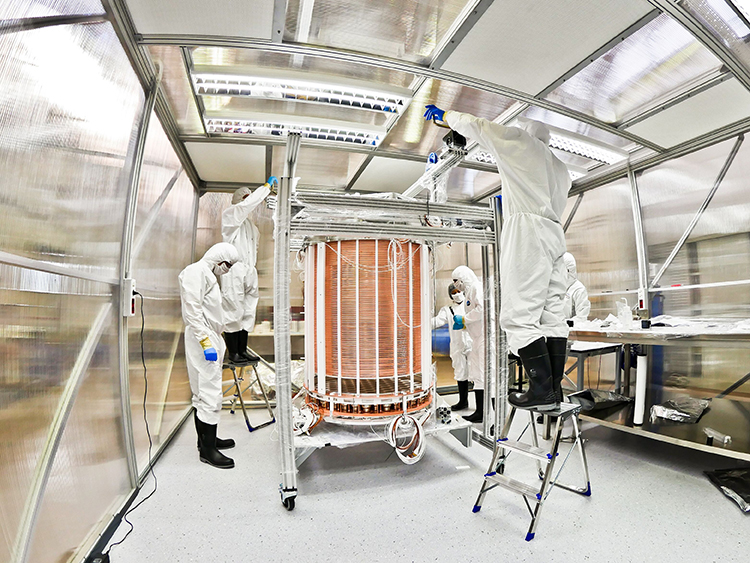XENON/DARWIN and LUX-ZEPLIN collaboration allows for next-generation dark matter detector
2021-07-21

Most of the universe is made up of dark matter, yet dark matter still largely remains a mystery to those who study it. Two of the leading collaborations that study dark matter are now joining forces to create the next-generation dark matter detector. According to an announcement from CERN, the XENON/DARWIN and LUX-ZEPLIN collaborations will work together on the design, construction, and operation of a new, single, multi-tonne scale xenon observatory to explore dark matter. The detector will be highly sensitive to a wide range of proposed dark matter particles and their interactions with visible matter.
Dr. Rafael Lang, Professor of Physics at Purdue University’s Department of Physics and Astronomy, and his group are part of the team that will seek to improve the detection of dark matter in our galaxy. His work with the XENON1T experiment attempts to explain our universe using a detector that uses liquid xenon to detect rare particle interactions.
“Joining forces is exactly the way to go,” explains Lang. “It's long been obvious that we need to go down this path. But it's difficult and not entirely trivial because, as of today, both XENON and LZ are running detectors that compete for the title of 'most sensitive dark matter detector'. So you're competing on the one side and yet are joining forces to work together on the next big thing. I'm excited about the scientific reach of these machines, and the teams are really a lot of fun to work with. It is a very pragmatic, collegial, and invigorating atmosphere.”
Lang is also currently assembling a review of the incredible science reach of such a future detector. With some 500+ authors across those two (currently competing) collaborations and across the world, plus interested theorists and phenomenologists, this will be quite challenging.
The XENONnT experiment utilizes a total of 8.3 tonnes of xenon to search for the ever elusive dark matter particles. Lang is excited about what this next generation dark-matter detector might reveal about the universe.
“These detectors are amazing in that if there is just a single electron that is ejected from its atom anywhere in a massive tank of thousands of kilos (tens of thousands of pounds) of liquid xenon, then we will still see that. Amazing sensitivity. At Purdue, we work to understand signals and backgrounds at that level in order to use these detectors to search in particular for light (sub-proton-mass) dark matter, for neutrinos from the Sun, and for neutrinos that we might see from a supernova explosion anywhere in our Milky Way galaxy. To do that, we work with a small version of that detector technology in our lab in the Physics building at Purdue, and we work on data analysis and modeling.”
Writer: Cheryl Pierce
Source: Rafael Lang